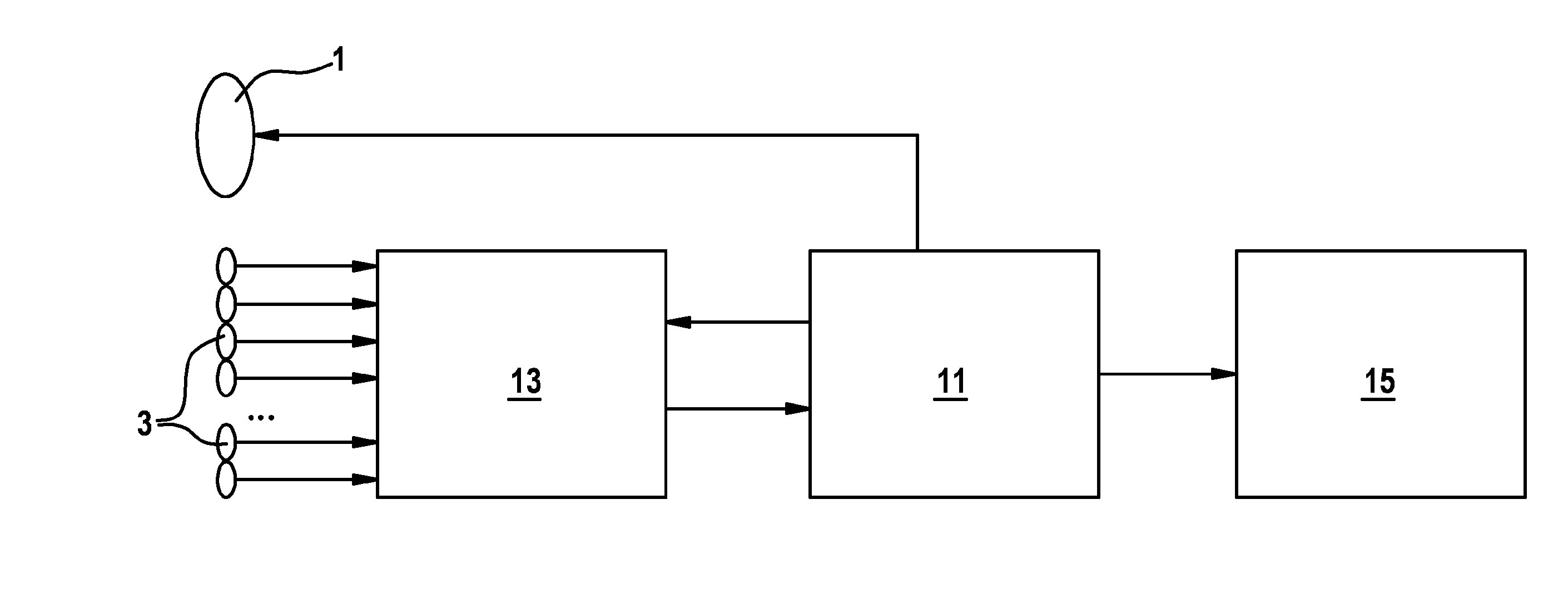System for determining the distance from and the direction to an object
a technology of distance estimation and direction, applied in the field of system and a method for determining the distance from and the direction to an object, can solve the problems of ambiguity in the distance estimation and position, the transmission and/or reception characteristics of an individual sensor are often so greatly limited, and the transmission and/or reception characteristics must be greatly limited, so as to improve the near-field detection effect and increase the detection tim
- Summary
- Abstract
- Description
- Claims
- Application Information
AI Technical Summary
Benefits of technology
Problems solved by technology
Method used
Image
Examples
Embodiment Construction
[0043]FIGS. 1 through 3 illustrate systems having an emitter and receiver elements which are arranged as a linear array. A system includes an emitter 1 and at least two receiver elements, in the specific embodiments illustrated here, eight receiver elements 3 in FIG. 1, ten receiver elements 3 in FIG. 2, and six receiver elements 3 in FIG. 3. Receiver elements 3 are arranged as a linear array, i.e., in a row next to one another. In the specific embodiment illustrated in FIG. 1, emitter 1 interrupts the array formed from receiver elements 3, and thus forms a part of the linear array.
[0044]According to the present invention, emitter 1 has a height or a diameter which is greater than one-half the wavelength of the signal. In contrast, receiver elements 3 have a height or a diameter which at most corresponds to one-half the wavelength of the signal. In the specific embodiment according to FIG. 1, emitter 1 and receiver elements 3 are designed with a circular cross section, so that in th...
PUM
 Login to View More
Login to View More Abstract
Description
Claims
Application Information
 Login to View More
Login to View More - R&D
- Intellectual Property
- Life Sciences
- Materials
- Tech Scout
- Unparalleled Data Quality
- Higher Quality Content
- 60% Fewer Hallucinations
Browse by: Latest US Patents, China's latest patents, Technical Efficacy Thesaurus, Application Domain, Technology Topic, Popular Technical Reports.
© 2025 PatSnap. All rights reserved.Legal|Privacy policy|Modern Slavery Act Transparency Statement|Sitemap|About US| Contact US: help@patsnap.com



